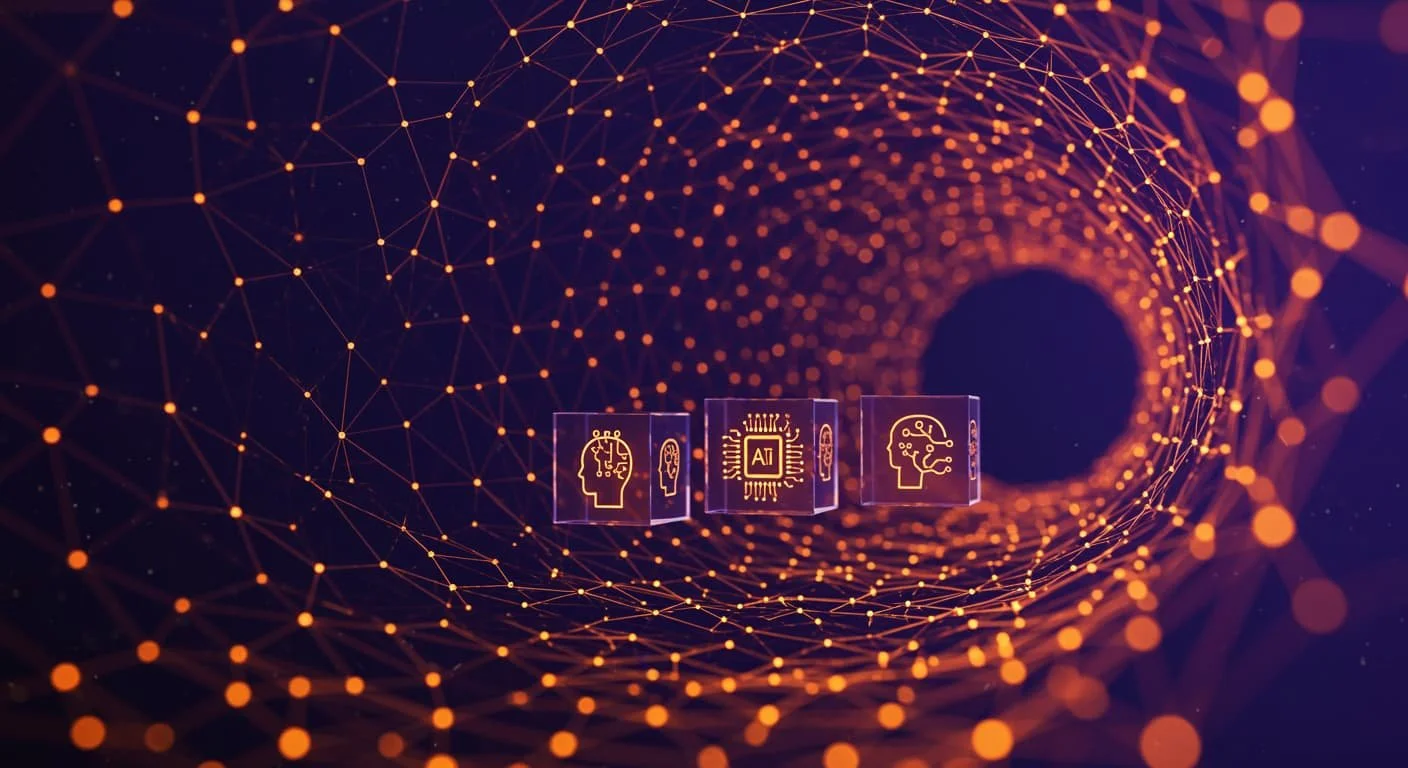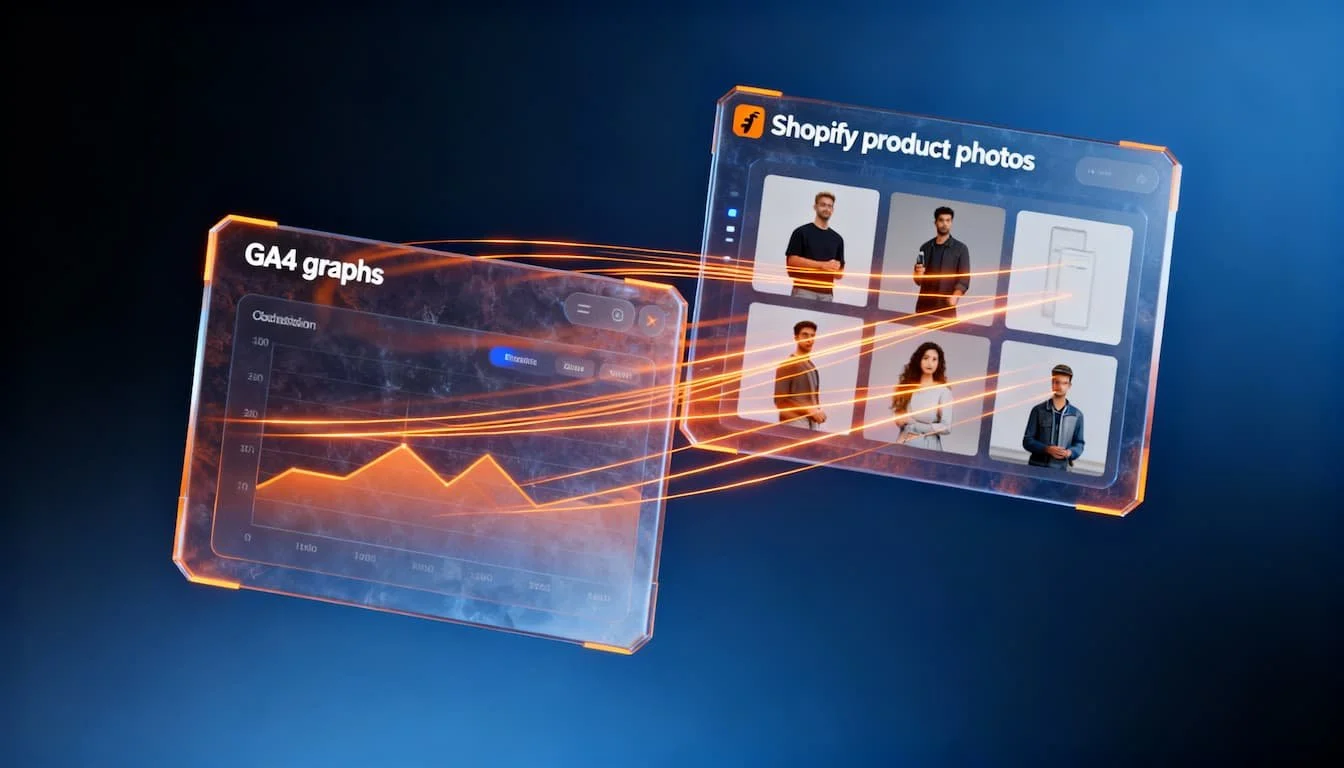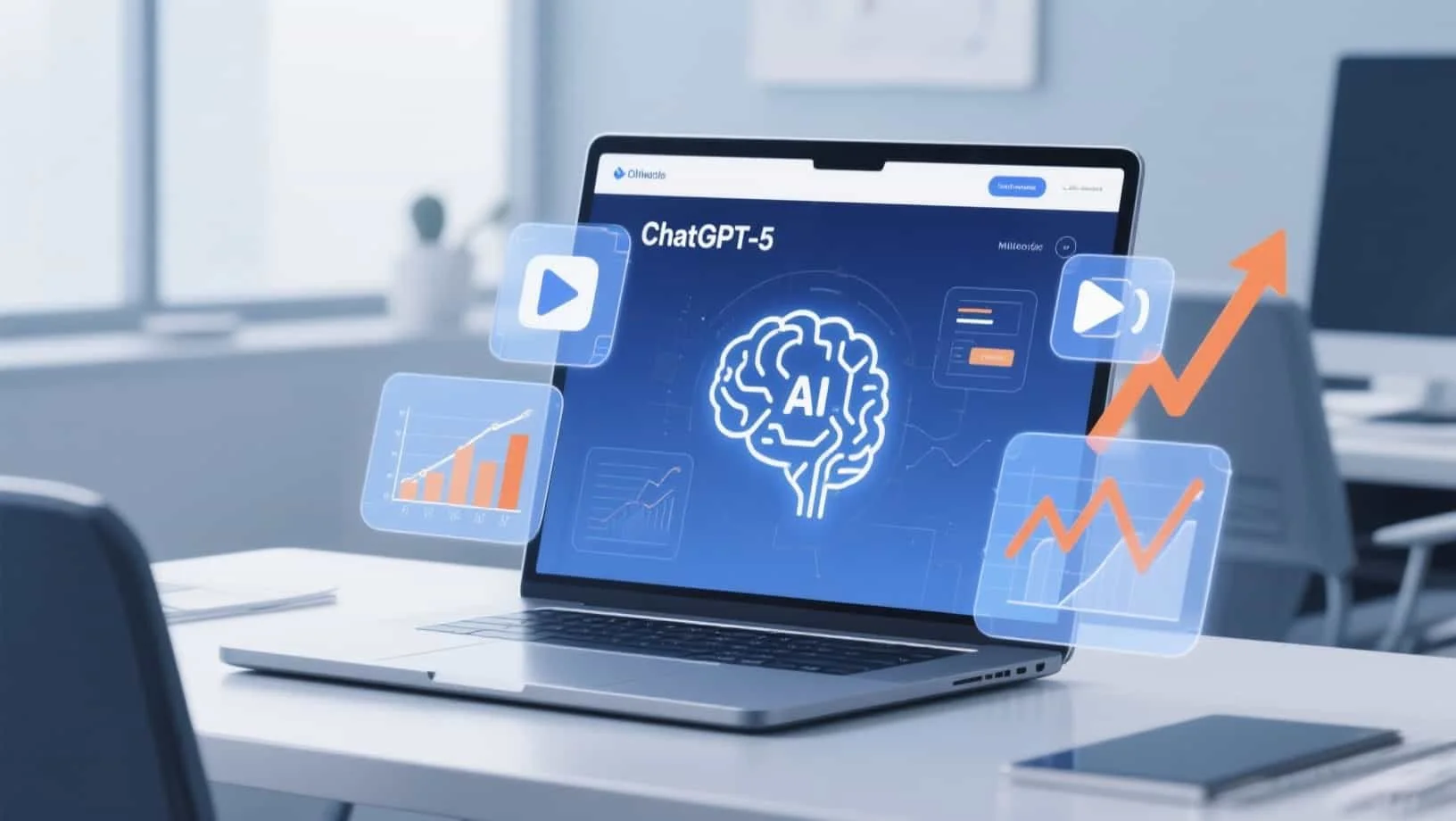AI chatbots for customer service: 80% fewer support tickets in 2026
Your inbox is overflowing. Your team is answering "where is my package" for the fiftieth time. Customers are waiting hours for a response. And every month there's an invoice for support staff who mainly handle repetitive questions.
Recognizable? 80% of your support tickets can be fully automated with an AI chatbot. Response time from hours to 30 seconds. Costs 17% lower. Higher customer satisfaction. And your team finally focuses on real problems instead of "how do I reset my password".
Companies like Salesforce now handle 1.2 million conversations per month without human intervention. This article shows how.
- 80% of support tickets can be automated – chatbots handle repetitive questions without human intervention
- 17% lower support costs at Salesforce – from 9,000 to 5,000 employees through AI agents
- Response time drops to less than 30 seconds – 24/7 availability without night shifts or weekend services
- Implementation takes 3-4 weeks – from FAQ setup to live chatbot with full system integration
- Payback period 3-8 months – faster for companies with 200+ tickets per week
- 70-85% goal completion rate – the remaining 15-30% escalates to humans with full context
What exactly does an AI chatbot do
An AI chatbot answers questions, solves problems and refers to your team when needed. Available 24/7 without breaks or weekends. The difference with a standard chatbot? This one continuously learns from every conversation.
The technology works with three layers. Natural language processing understands what customers mean, even with typos. A knowledge base contains all the answers about your products and processes. And API links to your CRM retrieve real-time data about orders and accounts.
A customer asks "I haven't received anything". The bot checks your e-commerce platform, sees that the package is on its way and provides tracking info. No generic FAQ but a specific answer about this order. Complex problem? Then it escalates to your team with full context.
This works for 70-85% of standard support questions. The remaining 15-30% goes to humans, but with all the information already collected so your team doesn't have to ask everything again.
Why chatbots are breaking through now
Adoption has exploded since 2024. Not because it suddenly became possible, but because the accuracy finally exceeded 90%. Companies now dare to leave customer contact to systems that consistently give correct answers.
Support teams are drowning in repetitive questions. Where is my package, how do I reset my password, what are your opening hours. Simple to automate, but thousands of hours of work on an annual basis. The traditional solution: hiring more people. That doesn't scale.
Customers also expect an immediate answer. A response time of 24 hours feels slow. Live chat must respond within minutes. You can't meet that expectation with traditional support without a night shift.
“AI now does 30% to 50% of the work at Salesforce.”
Source: Fox Business - Salesforce reduces support staff with AI
Gartner predicts that by 2029, AI chatbots will handle 80% of standard support autonomously. Salesforce reduced support costs by 17% and handles 1.2 million conversations per month without human intervention. For online marketing agencies and e-commerce companies, this is the new normal.
Ready to automate your support? Discover how ClickForest can get your chatbot live within 3 weeks with full integration and team training.
Concrete results from companies
Salesforce reduced support costs by 17% and reduced their team from 9,000 to 5,000 employees. They now handle 1.2 million human and 1.2 million automated conversations per month. Marc Benioff admitted in September 2025 that AI agents took over 50% of their customer service work.
Klarna launched a chatbot that handled 2.3 million conversations in 35 languages within a month, automating the work of 700 support staff. However, importantly, CEO Sebastian Siemiatkowski announced in May 2025 that they would be hiring people again because customers explicitly requested that option.
bol.com deployed AI agent Billie for their customer service. Billie handles questions about orders, returns, and products in Dutch and French. The system recognizes complex questions and seamlessly switches to human employees when necessary. Customers appreciate the speed and 24/7 availability.
These companies share three success factors. Start with clear use cases for repetitive questions. Integrate fully with existing systems. And keep human support available for complex cases.
Want to see what chatbots can do for your support volume? Schedule a free consultation where we analyze your situation and calculate concrete ROI.
How chatbots automatically handle 80% of tickets
A customer opens the chat: "I still haven't received anything". The AI analyzes this as a shipping question and checks the account. Is there a recent order? What is the expected delivery day? Is tracking available? Context is retrieved within seconds.
The bot retrieves the order status via linking to your webshop. It sees that the package is on its way and, according to tracking, will be delivered tomorrow. This info is combined with customer history from your CRM. VIP customer? Previous problems with delivery?
The bot responds: "Your order #12345 will be delivered to your home address tomorrow between 9 AM and 5 PM. Track your package here: [link]. Would you like a notification when it's on its way?" No generic FAQ, but specific information about this order.
Customer satisfied? Close conversation. Address not correct? Escalation to employee with full context: customer data, order number, problem, and chat history. Your team picks up directly without having to ask everything again.
This flow works for 70-85% of standard questions. Shipping, returns, account resets, product information. Questions where the answer is in your systems. The remaining 15-30% goes to support with all the information already collected.
CRO experts often see that chatbots have a direct impact on conversion. Visitors who receive direct help during checkout are significantly more likely to complete their purchase. For performance marketing teams, this is a no-brainer investment.
Time savings: AI chatbot vs human support
The ROI: what are the benefits?
Implementing a chatbot is an investment that quickly pays for itself. The exact costs depend on your specific situation: number of tickets, complexity of questions, required integrations, and desired functionality. No two companies are the same.
What determines the costs? Integration with your systems, FAQ database size, multilingualism, email automation, and custom functionality. A simple FAQ bot is more affordable than a fully integrated system with CRM linking and proactive triggers.
Savings on personnel A support employee costs €3,500-€4,500 per month including employer contributions. If a chatbot handles 80% of tickets that cost 2 FTE, you save €5,600-€7,200 per month. That's €67,200-€86,400 per year.
Extra revenue through better conversion Faster response times increase conversion by 10-35%. For a webshop with €500,000 annual turnover: €50,000-€175,000 extra. 24/7 availability means no missed sales outside office hours. Consistent answers reduce escalations.
Typical payback period For companies with 200+ tickets per week, we see payback periods of 3-8 months. The more repetitive the support, the faster the ROI. With less than 50 tickets per week, manual handling is often more efficient.
“When designed correctly, chatbots can improve the customer experience and generate positive emotions at a lower cost than live interactions.”
Source: Gartner - Chatbots are becoming the primary customer service channel
For e-commerce companies and B2B lead generation, the ROI is almost always positive with sufficient volume.
Want to calculate your exact ROI? Discuss your situation with a ClickForest specialist and get a concrete, customized business case.
Implementation in 4 weeks
Week 1: Building Data and FAQs Analyse your last 3 months of support tickets. Which questions are most common? Categorise the top 50-100. These will become your first chatbot flows. Build the ideal answer including variations for each question.
Week 2-3: Development and integration The chatbot is built based on your FAQ database. Integrations with your CRM, webshop and helpdesk are set up. Can the bot retrieve real-time data? Are escalations forwarded correctly? Testing and fine-tuning.
Week 4: Go-live and training Chatbot goes live, often first for a limited group. Monitor intensively. Train your team in management: how to add FAQs, adjust answers, interpret analytics. Set KPIs: goal completion, abandonment rate, customer satisfaction.
Month 2+: Optimisation Analyse which questions the bot cannot answer. Add to FAQ. Refine flows with high abandonment. A chatbot is never "finished" but evolves with your business.
AI marketing automation often goes hand in hand with chatbot implementation. The data on customer behaviour feeds your content production and advertising strategy.
Ready to get started? ClickForest gets your chatbot live within 3 weeks with full integration, FAQ construction and team training.
For which companies do chatbots work
E-commerce webshops 70-80% of support falls into repetitive categories: shipping, returns, product info. Fully automated. Shopify stores benefit extra through simple integration with real-time order data. Shopify marketing teams link chatbot data to campaigns.
Scale-ups with growing support You go from 10 to 100 customers per day but support doesn't scale along. Hiring multiple FTEs costs time and money. A chatbot switches along instantly without onboarding. Perfect for rapid growth phase.
B2B with long sales cycles Prospects have many questions before they buy. The chatbot answers specs, pricing, and implementation questions without sales involvement, shortening the sales cycle. Lead generation via chatbots works excellently: the bot qualifies leads and forwards warm prospects to sales.
Support teams that are overwhelmed 200+ tickets per week, of which 60%+ are repetitive? Ideal candidate. The bot reduces volume so your team can focus on complex cases. This increases efficiency and employee satisfaction.
International companies Multilingual support is expensive. A chatbot speaks Dutch, French, English without extra costs. Customers in different time zones get instant answers without a night shift.
Not suitable: Highly complex, unique questions where each case requires customization. Fewer than 50 tickets per week where manual handling remains more efficient. Strict compliance where human verification is mandatory.
Unsure if it works for your situation? Discuss it with a specialist who can estimate within 20 minutes whether a chatbot delivers ROI.
7 pitfalls to avoid
1. Automating too much at once Start small with the top 10-20 most frequently asked questions. Perfect those to 95%+ accuracy. Then expand. A chatbot that does 5 things perfectly is more valuable than one that does 50 things moderately.
2. No clear escalation 64% of consumers don't want companies to use AI if it makes it harder to reach a human. Make escalation prominent. A "talk to agent" button should always be visible.
“60% of customer service leaders are under pressure to implement AI. But they cannot ignore concerns about AI use, especially when it can cost customers.”
Source: Gartner - 64% of customers would prefer companies not to use AI
3. Robotic language "I have detected your question" doesn't work. Use natural, human language. Short sentences. Have the bot apologize if it doesn't understand something.
4. No data integration A chatbot without CRM integration is a fancy FAQ. Invest in API integrations so the bot knows customer history and provides personalized answers.
5. No monitoring Define KPIs in advance. Goal completion, abandonment rate, customer satisfaction. Build dashboards. Review weekly and adjust based on data.
6. Not involving the team Support sees the bot as a threat. Communicate honestly: the goal is to free people up for more interesting work. Involve the team in FAQ development.
7. Thinking you're done A chatbot is not an IT project with a fixed delivery date. Plan structural optimization. At least monthly: new FAQs, adjust flows, analyze performance.
SEO specialists use chatbot data to identify content gaps. Questions customers ask are often the same questions they type into Google.
The future of customer service
Voice chatbots are becoming mainstream Customers call a support number and speak directly with AI that responds naturally. The technology exists but still needs to scale. Within 2-3 years, we expect voice bots to handle 90%+ of telephone support without customers noticing the difference.
Proactive instead of reactive Current chatbots react. Future systems anticipate. The bot sees that a package is delayed and proactively sends an update. It notices that a customer is struggling and offers help before a frustrated email is sent.
Emotional intelligence A frustrated customer is treated differently than someone who is neutrally inquiring. The bot adjusts tone and escalation speed based on sentiment analysis.
“85% of customer service leaders will explore or pilot a customer-centric conversational GenAI solution in 2026.”
Source: Gartner - 85% of customer service leaders are exploring GenAI in 2025
Multimodal support Start a question via chat, switch to video call, send a screenshot, and get a voice response. All within one conversation without losing context.
Agentic AI: chatbots that perform actions The bot cancels an order and refunds money, sends a return label, and adjusts inventory. It solves problems instead of just providing explanations. Salesforce and other platforms are investing heavily in this.
Getting started with AI chatbots
Step 1: Analyze tickets Export 3-6 months of support tickets. Categorize by type: shipping, returns, technical, account. Which categories have the most volume and are repetitive? Calculate the time cost per ticket.
Step 2: Define initial use cases Choose 5-10 question types for MVP. Criteria: high volume, simple to automate, clear answer. Write out the ideal answer per use case, including conversation flow.
Step 3: Check infrastructure Which systems does the bot need to consult? E-commerce platform for order data? CRM for customer history? Helpdesk for tickets? List of required APIs.
Step 4: Build, buy, or outsource Building yourself takes time and skills. Buying is fast but less custom. Outsourcing to a specialist delivers a custom solution without burdening internal resources.
Step 5: Start small and test Launch MVP internally or for a small group. Monitor every conversation for the first week. Where does it go wrong? Gradually expand.
Step 6: Measure and optimize Track KPIs from day one. How many conversations start? How many end successfully? Schedule monthly optimization sessions.
Ready to automate support without losing control? Schedule a free demo and discover how ClickForest can get your chatbot live within 3 weeks. We'll show you what's possible with your specific use case.
Start automating your customer service today
80% fewer support tickets, 24/7 availability, and customers who get help faster. That's the impact of a well-implemented AI chatbot. The technology is mature, the ROI is proven, and early adopters are far ahead.
The question isn't whether you should implement a chatbot, but when. Every quarter you wait is a quarter your team wastes on repetitive questions, while competitors lower support costs and increase customer satisfaction.
ClickForest helps companies with AI-driven chatbot implementation that delivers immediate results. We build custom solutions tailored to your processes, integrate with all your systems, and train your team in management and optimization. No generic templates, but custom work that works.
What you get:
Custom chatbot development in your brand style
100+ FAQ database setup based on your support data
Full integration with CRM, webshop, and helpdesk
Email automation with smart routing
Team training and documentation
Monthly optimization and new FAQs
Want to see what's possible? Book a free demo call where we analyze your situation and calculate concrete ROI. No obligations, just honest advice on whether a chatbot makes sense for your organization.
Or first discover how AI transforms your complete marketing with our other services such as content production and ad creation.

🚀 More leads, higher conversion, better ROI
This article gave you insights. Now it's time for action. Whether you want to build a profitable webshop, generate more revenue from performance marketing or SEO, or grow with AI-marketing - we'll help you move forward concretely.
💬 Discuss your challenge directly with Frederiek: Schedule a free strategy session or send us a message
📧 Prefer to email? Send your question to frederiek@clickforest.com or call +32 473 84 66 27
Strategy without action remains theory. Let's take your next step together.
FAQ about AI chatbots for customer service
-
A traditional chatbot works with pre-written scripts and if-then rules. You literally program every possible answer. An AI chatbot uses machine learning and natural language processing to understand what a customer means, even if the question is phrased differently than expected. AI chatbots continuously learn from conversations, while traditional chatbots remain static.
-
The investment depends on your specific situation: number of tickets, complexity of questions, required integrations, and desired functionality. No two companies are the same. Factors that determine the price: FAQ database size, system integrations, multilingualism, email automation, and custom features. The payback period is typically between 3-8 months with sufficient support volume. Request a customized quote for your specific case.
-
Yes, modern AI chatbots support multilingual support without extra development. They automatically detect the language a customer is writing in and respond in that same language. Dutch, French, English, German, and Spanish are standardly available. For companies with international customers, this eliminates the need for multilingual support teams or expensive translation services.
-
A well-configured chatbot recognizes when it doesn't understand something and escalates to a human agent. This happens transparently with a message like "let me connect you with a colleague who can help with this". All context from the conversation is carried over so the agent can help directly without having to ask everything again. Escalation to humans should always be simple and prominently available.
-
From decision to live chatbot takes an average of 3-5 weeks. Week 1 focuses on data collection and FAQ building. Week 2-3 is development, integration, and testing. In week 4, the bot goes live with team training. After launch, continuous optimization begins, where new questions are added and flows are refined. A chatbot is never "finished" but evolves permanently.
-
No, they shift the focus of your team. Chatbots handle repetitive, simple questions so your employees have time for complex cases that require human expertise. The best implementations combine AI efficiency with human empathy. Salesforce did reduce their support team from 9,000 to 5,000 people, but those remaining 5,000 now focus on more valuable work with higher customer satisfaction.
-
At a minimum, integration with your website for the chat widget. For advanced functionality, connect your CRM (HubSpot, Salesforce), helpdesk tool (Zendesk, Intercom), and, if relevant, your e-commerce platform (Shopify, WooCommerce). These links give the chatbot access to customer data, order status, and support history. Without integrations, the bot remains limited to general FAQs without personalization.
-
Key KPIs are goal completion rate (how many conversations end successfully), escalation rate (how many go through to humans), time to resolution, and customer satisfaction score. Secondary metrics are number of conversations, most frequently asked questions, abandonment rate, and containment rate. Track these from day one in dashboards and review at least monthly. Good chatbots achieve 70-85% goal completion and 4+ satisfaction score.
-
Absolutely. B2B chatbots help with lead qualification, technical questions about products, pricing information, and demo scheduling. They shorten sales cycles by helping prospects directly without sales involvement. B2B cases often require more detailed product knowledge and longer conversations than B2C, but the ROI is just as high. Chatbots provide significant advantages, especially for SaaS companies and tech suppliers.
-
Yes, modern chatbots can set triggers to proactively send messages. For example, when a customer is on the checkout page for 30 seconds without converting, or when a package is delayed. This proactive support prevents problems before customers become frustrated. Be careful that this doesn't become intrusive - timing and relevance are crucial for good customer experience.
-
Trying to automate too much at once is the biggest pitfall. Start small with 10-20 use cases and gradually expand. The second risk is no clear escalation to humans - customers should always be able to easily switch to support. The third risk is launching without KPIs and monitoring, so you don't know if it's working. Fourth is robotic language that doesn't feel natural. These risks are all avoidable with good planning.
-
The chatbot must speak as your brand communicates. Informal or formal, energetic or professional, with humor or neutral. You define this during development by writing example conversations and providing tone of voice guidelines. Test intensively whether the tone is correct before you go live. A chatbot is often the first point of contact with your brand and must be consistent with your other communication.
Sources and references
AI and customer service research:
Gartner Inc.: "Chatbots will become primary customer service channel within five years" - https://www.gartner.com/en/newsroom/press-releases/2022-07-27-gartner-predicts-chatbots-will-become-a-primary-customer-service-channel-within-five-years
Gartner Inc.: "85% of customer service leaders are exploring GenAI in 2025" - https://www.gartner.com/en/newsroom/press-releases/2024-12-09-gartner-survey-reveals-85-percent-of-customer-service-leaders-will-explore-or-pilot-customer-facing-conversational-genai-in-2025
Gartner Inc.: "Agentic AI will autonomously resolve 80% of customer service issues by 2029" - https://www.gartner.com/en/newsroom/press-releases/2025-03-05-gartner-predicts-agentic-ai-will-autonomously-resolve-80-percent-of-common-customer-service-issues-without-human-intervention-by-20290
Gartner Inc.: "64% of customers prefer not to use AI for customer service" - https://www.gartner.com/en/newsroom/press-releases/2024-07-09-gartner-survey-finds-64-percent-of-customers-would-prefer-that-companies-didnt-use-ai-for-customer-service
Company implementations and case studies:
Fox Business: "Salesforce reduces support staff from 9,000 to 5,000 with AI" - https://www.foxbusiness.com/economy/salesforce-cuts-4000-jobs-due-ai-ceo-says
Fortune Magazine: "Salesforce CEO dismissed 4,000 customer service jobs for AI agents" - https://fortune.com/2025/09/02/salesforce-ceo-billionaire-marc-benioff-ai-agents-jobs-layoffs-customer-service-sales
Entrepreneur: "Klarna hires human support again after AI fell short" - https://www.entrepreneur.com/business-news/klarna-ceo-reverses-course-by-hiring-more-humans-not-ai/491396
Technology and trends:
Verloop.io: "100 most important chatbot statistics for 2025" - https://www.verloop.io/blog/100-best-chatbot-statistics
Axios: "Marc Benioff on how humans and AI can work together" - https://www.axios.com/2025/07/29/benioff-ai-workforce-shift













